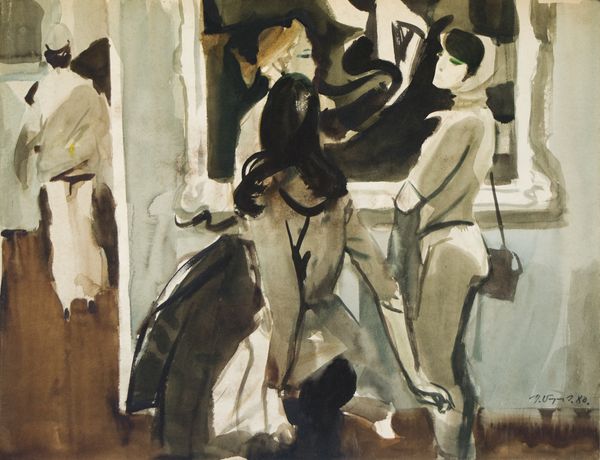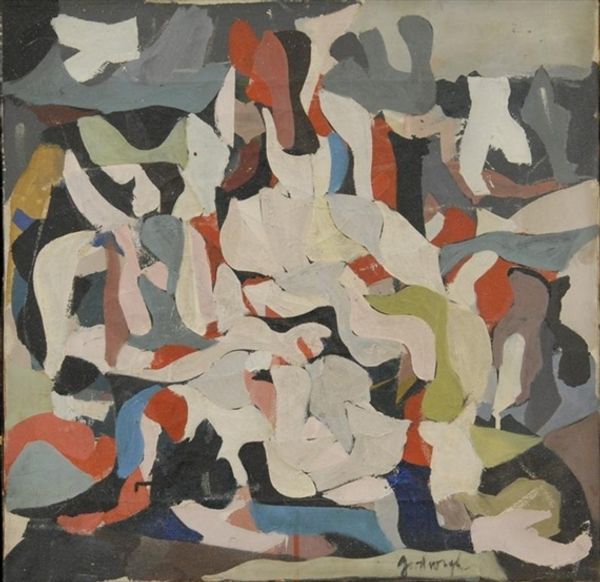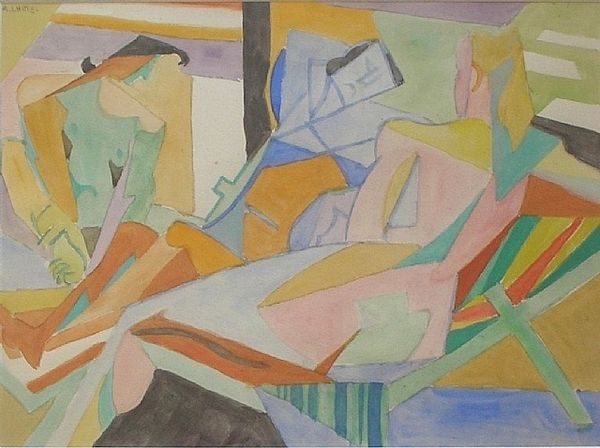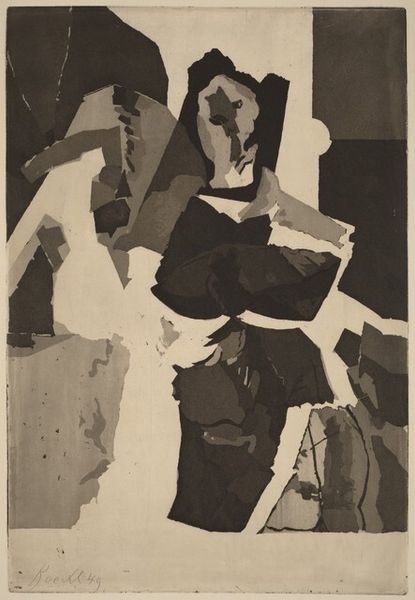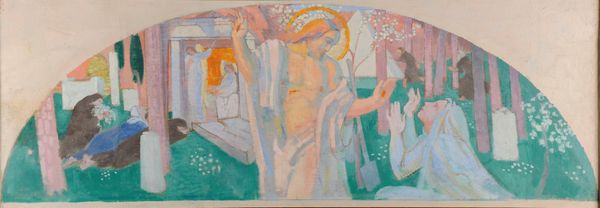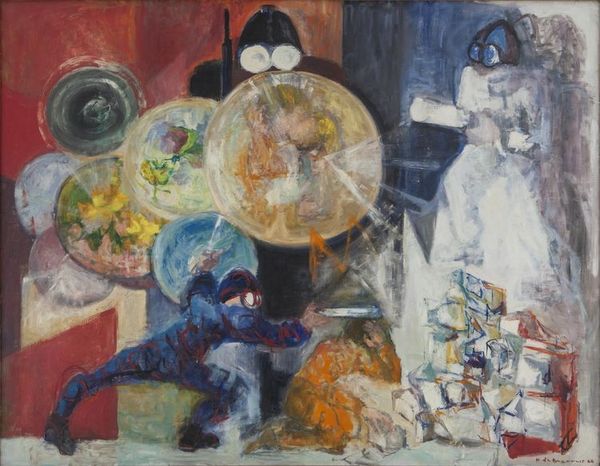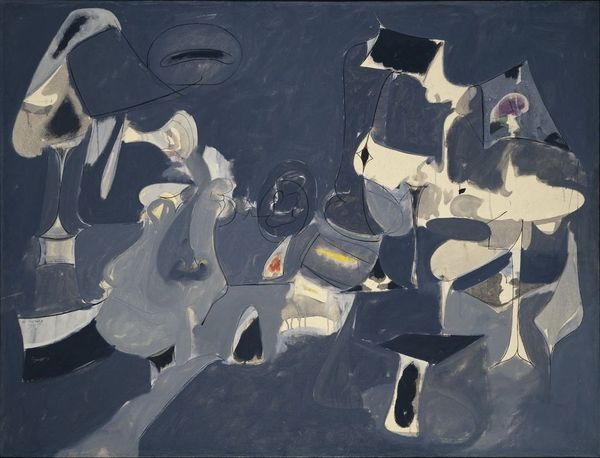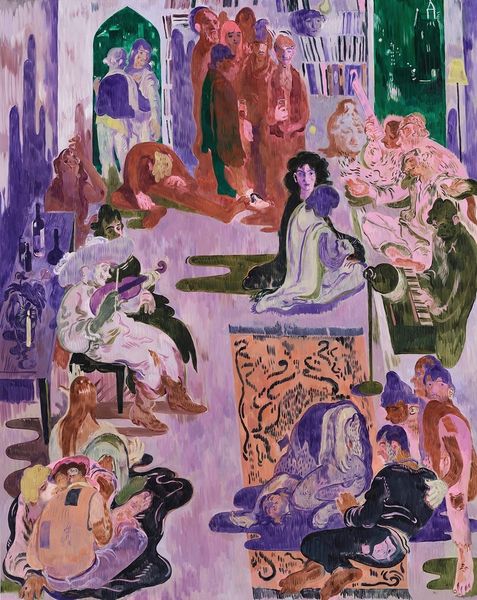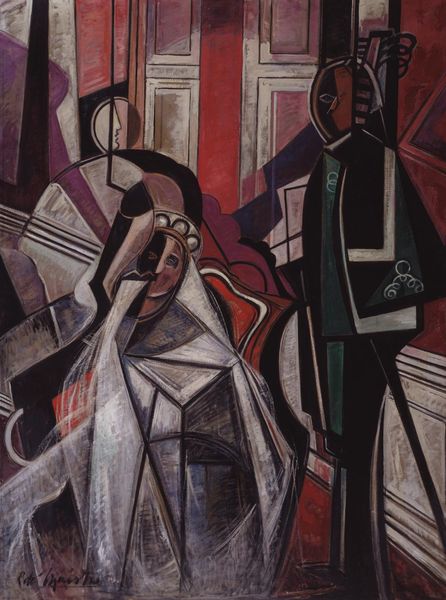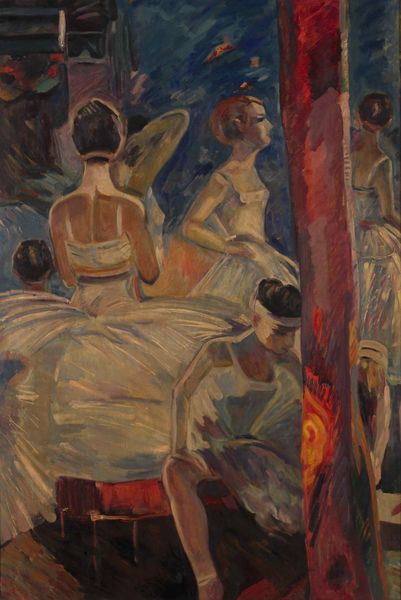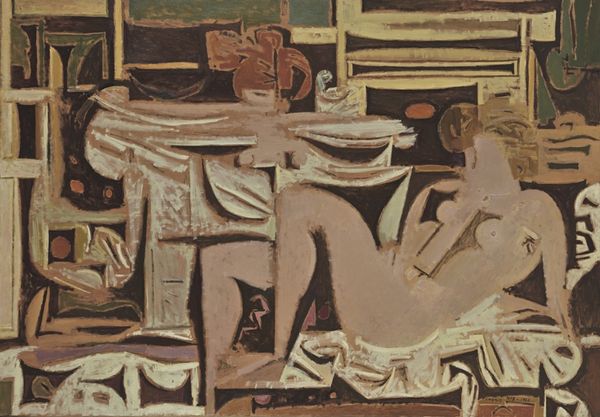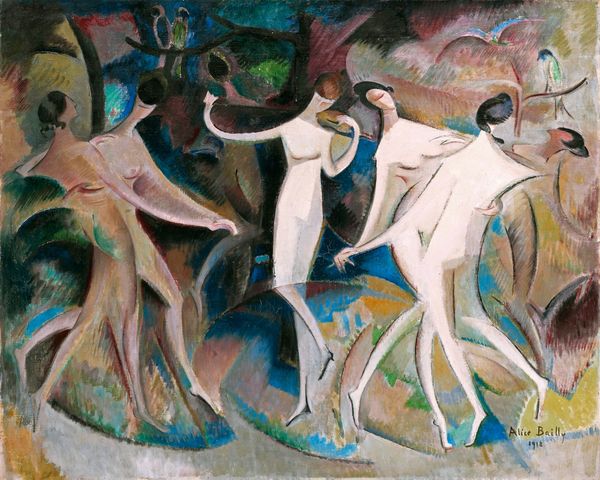
painting, oil-paint
#
painting
#
oil-paint
#
figuration
#
oil painting
#
nude
#
modernism
Copyright: Public Domain: Artvee
Editor: Here we have "The Dawning" by Arthur Bowen Davies, an oil painting dating from around 1915. It strikes me as rather fragmented and dreamlike. What do you see in this piece from a formalist perspective? Curator: From a formal standpoint, notice the almost ethereal treatment of the figures, they appear to be constructed from a palette dominated by muted grays and greens, unified in tonality. The angular, geometric shapes scattered throughout do create a sense of dynamism that would otherwise not be felt in the overall stasis, an interesting effect. How do you interpret this interplay? Editor: I find it intriguing how the geometric shapes contrast with the soft lines of the figures. Is it a conscious artistic choice by Davies to highlight this duality? Curator: Precisely. He is inviting us to deconstruct the traditional representation of the human form. Notice how the interlocking planes disrupt the smoothness, compelling the eye to constantly move, preventing a singular focal point. It avoids any sentimentality. Editor: So, the painting challenges us to move beyond mere representation and to focus on the pure, abstract elements. Is that accurate? Curator: Entirely. Davies presents us with an arena where form dictates function. Where the nude, devoid of its classical moorings, exists purely as an exercise in pictorial construction, pushing boundaries. The very picture plane asserts itself. Editor: Fascinating. I now understand better how focusing on the elements and shapes lets you analyze the artwork itself, beyond external meanings. Thank you for the insight! Curator: My pleasure. Hopefully you can now perceive how these fundamental considerations contribute to an informed understanding of this compelling modernist aesthetic.
Comments
No comments
Be the first to comment and join the conversation on the ultimate creative platform.
